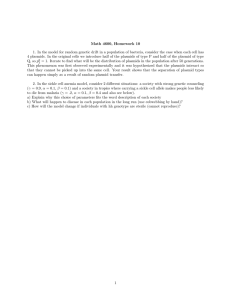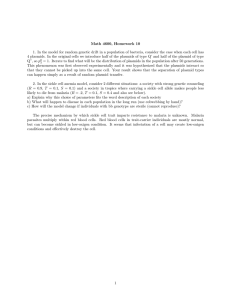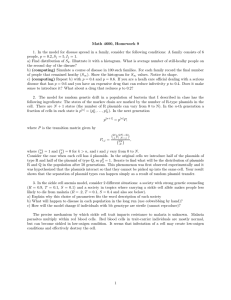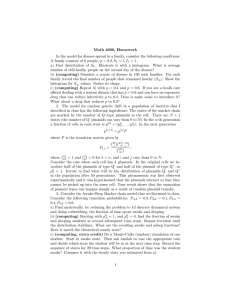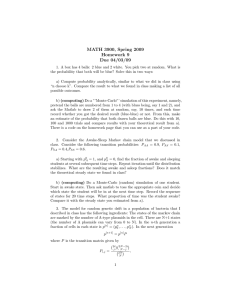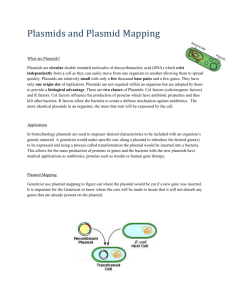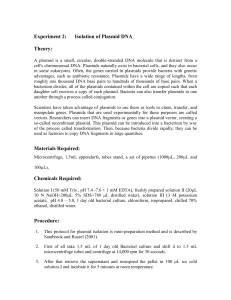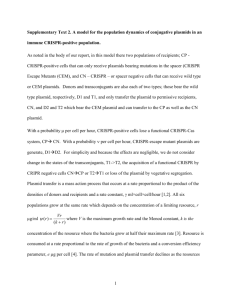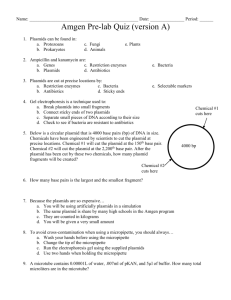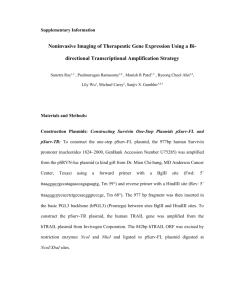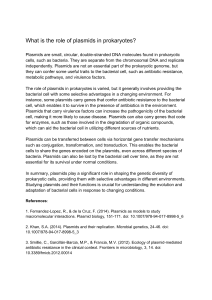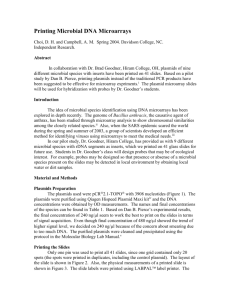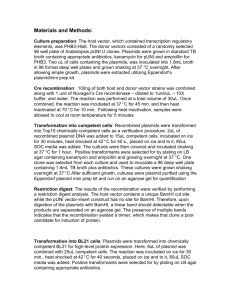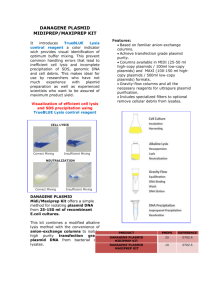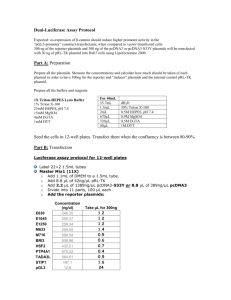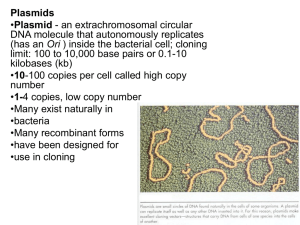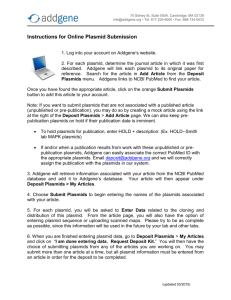Plasmid Shipment
advertisement
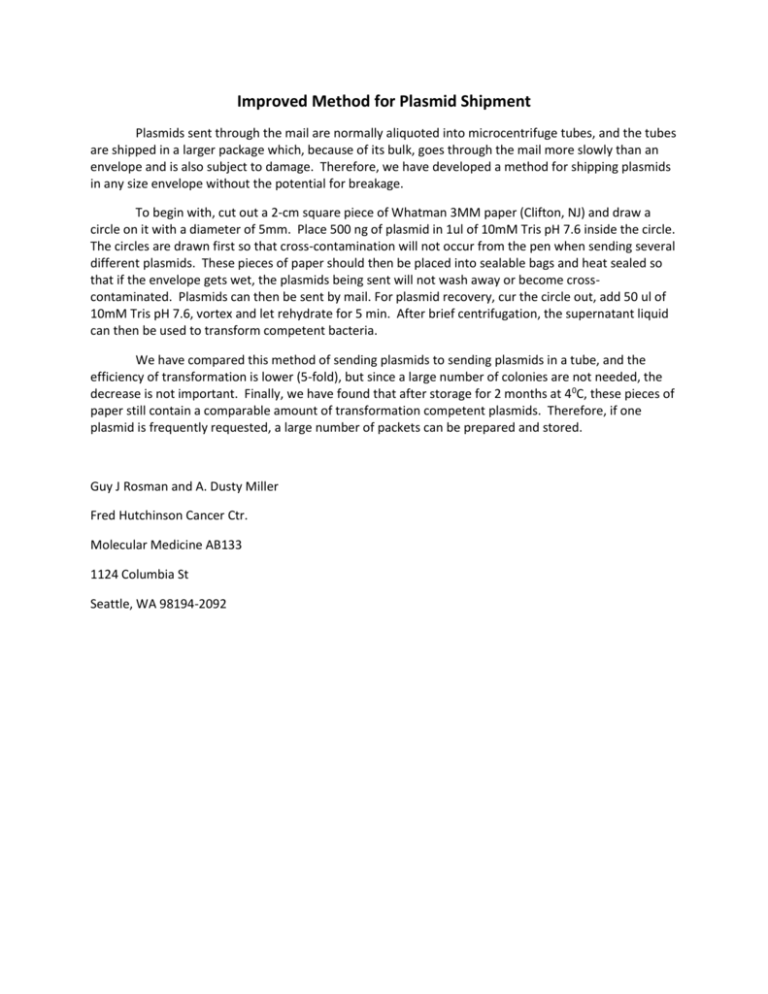
Improved Method for Plasmid Shipment Plasmids sent through the mail are normally aliquoted into microcentrifuge tubes, and the tubes are shipped in a larger package which, because of its bulk, goes through the mail more slowly than an envelope and is also subject to damage. Therefore, we have developed a method for shipping plasmids in any size envelope without the potential for breakage. To begin with, cut out a 2-cm square piece of Whatman 3MM paper (Clifton, NJ) and draw a circle on it with a diameter of 5mm. Place 500 ng of plasmid in 1ul of 10mM Tris pH 7.6 inside the circle. The circles are drawn first so that cross-contamination will not occur from the pen when sending several different plasmids. These pieces of paper should then be placed into sealable bags and heat sealed so that if the envelope gets wet, the plasmids being sent will not wash away or become crosscontaminated. Plasmids can then be sent by mail. For plasmid recovery, cur the circle out, add 50 ul of 10mM Tris pH 7.6, vortex and let rehydrate for 5 min. After brief centrifugation, the supernatant liquid can then be used to transform competent bacteria. We have compared this method of sending plasmids to sending plasmids in a tube, and the efficiency of transformation is lower (5-fold), but since a large number of colonies are not needed, the decrease is not important. Finally, we have found that after storage for 2 months at 40C, these pieces of paper still contain a comparable amount of transformation competent plasmids. Therefore, if one plasmid is frequently requested, a large number of packets can be prepared and stored. Guy J Rosman and A. Dusty Miller Fred Hutchinson Cancer Ctr. Molecular Medicine AB133 1124 Columbia St Seattle, WA 98194-2092
